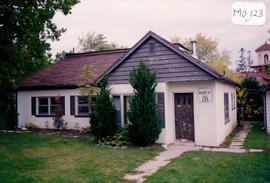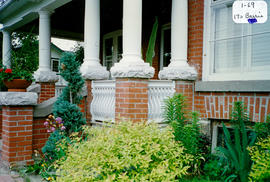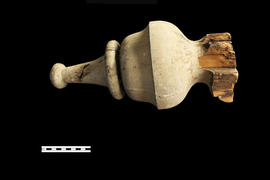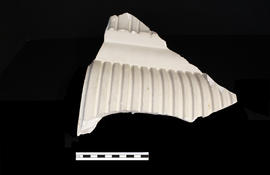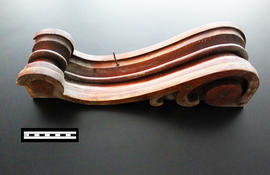- CA BWGPL GJ-HB-2017-04-07-12
- Item
- 1995
Part of George Jackson fonds
The building located mid-block at 123 Moore Street was built pre-1900 in the Gothic Revival style. It stood behind the grand, Italianate villa (The Convent) that was once located at 118 Barrie Street and was the home of the Lukes’ family. Originally, the structure was built to be a two-car garage to house Gibb Lukes’ vehicles (particularly his Stanley Steamer). The garage was eventually converted into a dwelling. At the time of this photo (1995), it was being used as the Bradford Food Bank.
The one-storey, three-bay cottage has an “L”-shaped plan with a side hall. There is an asymmetrical façade with a front gable above the façade projection and a medium-pitched, gable roof. The front wall below the gable is inset slightly to provide shelter for the front entrance. It is set into a simple, rectangular opening. Small windows that are not original have low floor to ceiling heights. They are set into rectangular openings with plain, wood frames and sills. The building has wood frame construction with stucco cladding and a parged, stone foundation. According to the 2000 inventory, this modest cottage has few original details other than the building’s form. (1, 2, 3)
George Jackson

